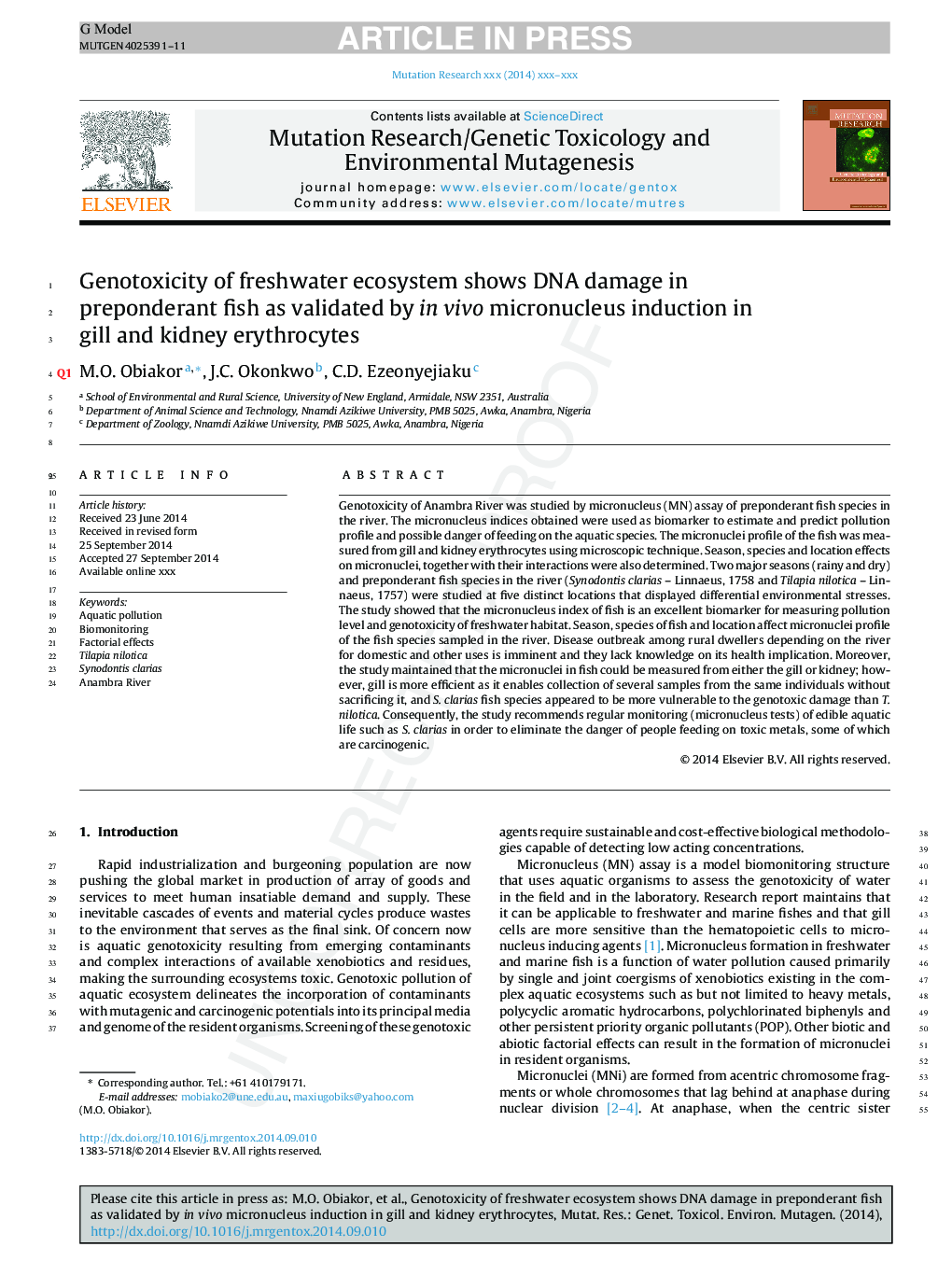| Article ID | Journal | Published Year | Pages | File Type |
|---|---|---|---|---|
| 8456445 | Mutation Research/Genetic Toxicology and Environmental Mutagenesis | 2014 | 11 Pages |
Abstract
Genotoxicity of Anambra River was studied by micronucleus (MN) assay of preponderant fish species in the river. The micronucleus indices obtained were used as biomarker to estimate and predict pollution profile and possible danger of feeding on the aquatic species. Micronuclei profile of the fish was measured from gill and kidney erythrocytes using microscopic technique. Season, species and location effects on micronuclei, together with their interactions were also determined. Two major seasons (rainy and dry) and preponderant fish species in the river (Synodontis clarias, Linnaeus, 1758 and Tilapia nilotica, Linnaeus, 1757) were studied at five distinct locations that displayed differential environmental stresses. The study showed that the micronucleus index of fish is an excellent biomarker for measuring pollution level and genotoxicity of freshwater habitat. Season, species of fish and location affect micronuclei profile of the fish species sampled in the river. Disease outbreak among rural dwellers depending on the river for domestic and other uses is imminent and they lack knowledge on its health implication. Moreover, the study maintained that the micronuclei in fish could be measured from either the gill or kidney; however, gill is more efficient as it enables collection of several samples from the same individuals without sacrificing it, and Synodontis clarias fish species appeared to be more vulnerable to the genotoxic damage than Tilapia nilotica. Consequently, the study recommended regular monitoring (micronucleus tests) of edible aquatic life such as Synodontis clarias in order to eliminate the danger of people feeding on toxic metals, some of which are carcinogenic.
Related Topics
Life Sciences
Biochemistry, Genetics and Molecular Biology
Cancer Research
Authors
M.O. Obiakor, J.C. Okonkwo, C.D. Ezeonyejiaku,
